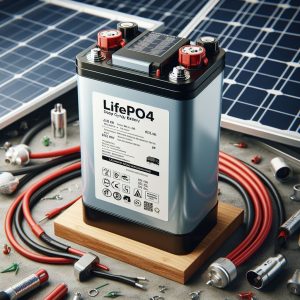Factors Affecting Battery Lifespan
When we discuss whether batteries can last for 20 years, we are essentially exploring the battery’s cycle life and its performance in various application scenarios. From a technical standpoint, the lifespan of a battery is influenced by multiple factors including battery type, operating environment, charging and discharging patterns, as well as maintenance practices. Taking lithium-ion batteries as an example, these batteries are widely used in consumer electronics, electric vehicles (EVs), and energy storage systems due to their high energy density, lightweight design, and relatively long cycle life.
According to research by the Institute of Electrical and Electronics Engineers, lithium-ion batteries typically have an average lifespan of 2 to 3 years. However, this does not mean they cannot be designed for longer durability. Some high-quality lithium-ion batteries retain up to 80% of their original capacity after numerous charge cycles, and many such products continue functioning properly beyond two or three years. More importantly, advances in materials science and technological innovation have led to modern lithium-ion battery designs that prioritize long-term stability and safety, significantly extending their practical service life.
Technological Advances for Longer Battery Life
For instance, in the EV sector, Nissan claims that the battery of its Leaf model can last 22 years, projecting it would outlive the car’s average lifespan by 10 to 12 years. This statement not only reflects manufacturers’ confidence in product quality but also highlights the importance of optimizing Battery Management Systems (BMS) to enhance battery performance. The BMS monitors each cell’s status and ensures optimal working conditions throughout its lifecycle, reducing unnecessary wear and tear.
Moreover, for stationary energy storage applications like residential or industrial power banks, certain types of lithium-ion batteries—particularly Lithium Iron Phosphate (LFP)—are favored due to their excellent thermal and chemical stabilities. These properties enable LFP batteries to operate safely and reliably across broader temperature ranges, thereby contributing to achieving longer lifespans. According to statistics from authoritative domestic institutions, while early deployed energy storage units promised a 20-year lifespan, the actual operation has only been around 3-5 years so far, constrained by early technology limitations. With advancements, newly launched storage solutions aim to meet or exceed expected lifespans.
Usage Habits and Future Prospects
It is worth noting that besides selecting appropriate battery technologies and management strategies, proper usage habits play a crucial role too. Shallow charge-discharge cycles benefit battery health more than deep ones since the latter tends to cause irreversible damage through internal structural changes. Meanwhile, users should avoid storing or using devices under extreme temperatures for extended periods because high temperatures accelerate battery aging processes, whereas low temperatures may temporarily reduce battery efficiency.
In conclusion, while not all battery types guarantee a 20-year lifespan, advanced technology, and reasonable use methods indeed make it possible for specific categories of batteries to approach or even surpass this goal. Looking ahead, as researchers continuously strive to explore new materials and processes, we have every reason to believe that battery technology will continue evolving, providing users with increasingly durable and efficient energy solutions. This progression responds not only to current market demands but also plays a significant part in promoting global sustainability objectives.




